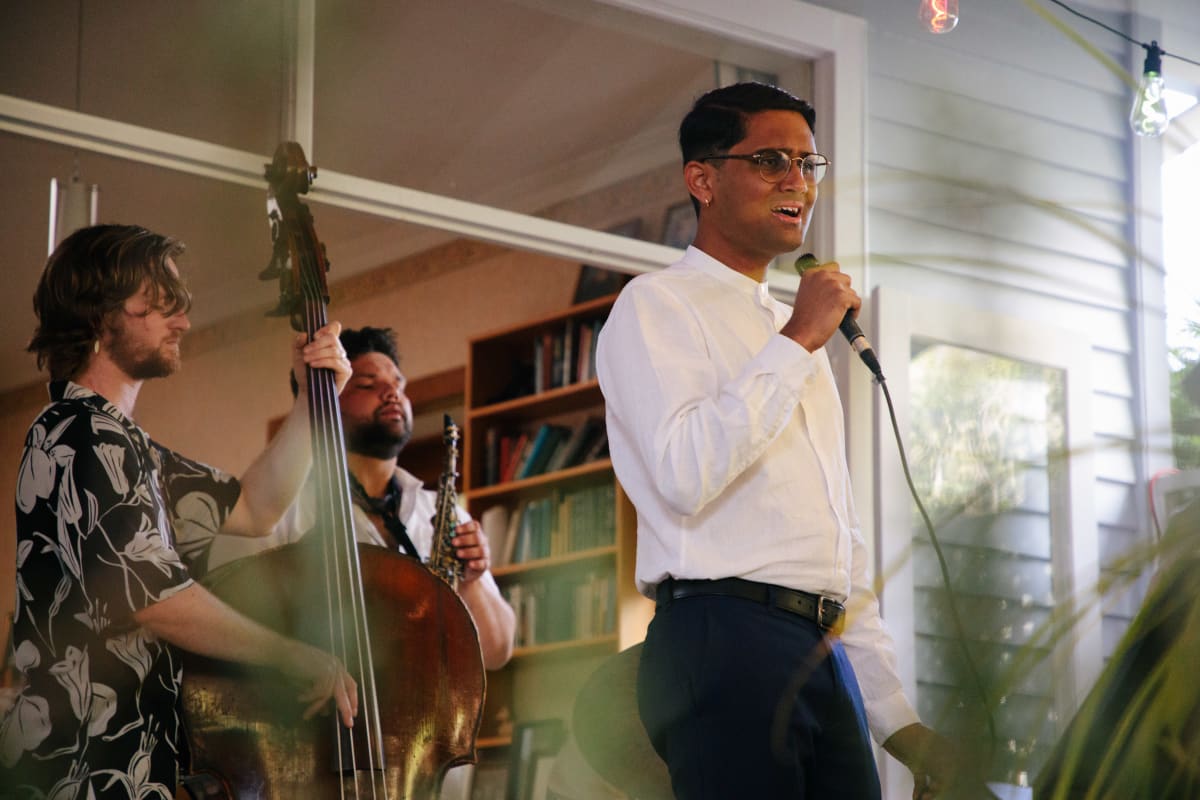
The co-option of Hindustani music by Hindu nationalists
I was in India in 2018 for my fourth Hindustani music residence when TM Krishna was again targeted by adherents of Hindutva (Hindu nationalism). They were infuriated by the Carnatic singer, because his concerts included songs on Jesus in Malayalam and Allah in Tamil, verses by 12th-century philosopher Basava and 21st-century author Perumal Murugan, and bhajans by anti-colonialist Gandhi and poet-sant Tukaram.
Pluralism is risky business in present-day India. For the advocates of Hindutva, such a set list is unacceptable; it threatens the legitimacy of the supremacist project. That is, their quarrying of India’s pluralist-secularist foundations with an attempt to construct, in its place, a Hindu rashtra (Hindu nation state), "where some Indians will be more equal than others". Their allegations against Krishna were, by then, routine: "anti-nationalist! anti-Hindu!" Calls were made from above and threats were issued from below, and the concert coordinators were harassed until Krishna’s programme was cancelled.
Though the intolerance of pluralism is not an India-only problem, this variety spills across that country and its diaspora. But the tenor of intimidation differs between the two. Whereas a performer’s life and livelihood in India is at risk from vigilante publics emboldened by state apparatuses, the campaigns in the diaspora are coordinated by-and-large by a professional-managerial class. Earlier in 2018, in Maryland, a temple cancelled Krishna’s concert after pressure from such subscribers of Hindutva who did not like that he sang Christian hymns.
India has distinct streams of classical music: Carnatic is the southern distributary, whereas I belong to the northern one, Hindustani music. But unlike Krishna, I am an amateur—in the truest sense of the word, from the classical Latin amāre, ‘to love’. I sing Hindustani music for the love of it.
The adherents of Hindutva at home in Tāmaki Makaurau Auckland who come to my concerts have been pleased by my progress. Their favourites are the Rama bhajans. They accost me by the idli sambar table and ask me why I don’t perform under their saffron banners. It’s getting harder to avoid them. Their influence reaches some 50 cultural and religious organisations in Aotearoa New Zealand. Even my two tabla accompanists have been compelled to be their collaborators.
What does it mean to sing Hindustani music while Hindu nationalists attempt to co-opt the tradition? How do we resist India’s classical arts and cultural traditions being backed into communalist corners? And what does it mean to represent national culture in the diaspora—what if I don’t want to sing songs for the promotion of a Hindu nation state? And what happens when, in the pretence of preservation and protection, the ideology of Hindutva threatens to spoil Hindustani music?
Let me put things in no uncertain terms: What is happening in the Indian diaspora of Aotearoa New Zealand is the co-option of Hindustani music by Hindu nationalists—not Hindus per se, but the adherents of Hindutva.
How is this happening? Their claim to Hindustani music rests on a central conceit: Hindu nationalists characterise Hindustani music as the cache of the Hindus, traceable back to a mythic Hindu civilisation. Crucially, in their project to ‘make India Hindu again’, they figure non-Hindu claims upon the tradition as invasive. Anything ‘traditional’ is a site of consternation and contestation for the Hindutva movement. And since Hindustani music markets and sustains itself as being among India’s classical arts and cultural traditions, it risks becoming colonised by Hindu nationalists who perpetuate a politics of othering and hate, especially of Muslims and Christians.
In this way, Hindustani music is syphoned of its Islamic inheritance. By appropriating the music to re-present it as the privy of a Hindu cultural heritage, Hindu nationalists in Aotearoa New Zealand find new followers for their cause from among the white singers of Hare Krishna kirtans and Fijian Indian singers of Rama bhajans.
The truth remains that Hindustani music does not belong to Hinduism as a religion, let alone Hindutva as a political ideology. Indeed, the de-Islamisation of India’s classical arts and cultural traditions is like trying to separate the sweetness from the sharbat. In the end, it’ll all spill.
This is not the first time Hindustani music has been burdened by exclusionist demands. In the modern period, my teacher’s teacher’s teacher’s teacher Ustad Abdul Karim Khan was criticised by Hindus and his Muslim co-religionists alike for reciting the Gayatri mantra, educating Hindu students and women and for working with an English musicologist. Even in Khan sahib’s days, attempts were made to split Hindu and Muslim communities, but they were largely unsuccessful. Efforts to vitiate this tradition failed in pre-independence India when resistance disallowed such a project as Hindutva to reach hegemonic proportions. Khan sahib’s lesson is to let the practice itself be the proof of pluralism. Not just reasoned argument, but singing with practical intent to disprove the thesis of separatism and sectarianism. The social reformer and Sanskritist R. G. Bhandarkar was among Khan sahib’s supporters, as were anti-colonialists Bal Gangadhar Tilak and Mohandas Karamchand Gandhi. Khan sahib sang "Om Tat Sat" for Tilak after he returned from the Mandalay prison, and for Gandhi, he sang "Ram Dhun".

To inherit such a cultural tradition requires us to locate ourselves at the crossroads of social-political transformations in the present day. Instead of seeing Hindutva as offering the only pathway to sustain a cultural practice, what I feel we owe this tradition is that it remain pluralistic and secular, that it be unencumbered by exclusionist and essentialist claims to it and that it be a house for the worshippers of any God, or no god at all. I see an example in the crowded houses of TM Krishna’s Carnatic concerts, because Krishna invites all of the gods. And he continues his appeal: Krishna vowed in response to the boycotts to release one song on Jesus or Allah a month.
Our horizons cannot not be limited to simple maintenance of Hindustani music. As inheritors of the tradition, we ought also to redress its historical prejudices and to seek alignment with egalitarian commitments: anti-caste and anti-class struggles, for feminist futures and in solidarity with queer peoples. It is not only the craft that should matter, but whether others have the possibility to participate, practice and perform.
Performing Hindustani music in Tāmaki Makaurau Auckland comes with a few added peculiarities to do with the politics of representation. In a single note, you’re seen also to be upholding and expressing cultural identity. To sing Hindustani music as an Indian in the diaspora is to hash out in public the idea of India and Indianness. Here, the context and content of our concerts matter—from the colour of the banners to the choice of compositions. It is not innocent to perform on saffron stages, and to maintain, as musicians, the supposed separation of culture from politics—that is, from the question of how to live together.
Hindustani music is a site where culture and politics can be reimagined. How can I draw upon cultural tradition as a studied resource while simultaneously rejecting culture as essentialist and exclusionist? In reassessing where and how this music can turn up in our lives, my attempts to vernacularise the tradition in Aotearoa New Zealand have opened out to new settings and new relations.
A mildly abbreviated version taken with kind permission from the thought-provoking new anthology Past the Tower, Under the Tree: Twelve Stories of Learning in Community edited by Balamohan Shingade and Erena Shingade (Gloria Books, $38), available from selected bookstores or directly from Gloria. The editors remark, "We hope it will give people a vision of the many amazing and unexpected forms of education which often don’t make it into mainstream discussions of what education can or should be. Some of our contributors have written about tā moko, street theatre, rap and Treaty work, and some of their mentors include aunties, priests, and peers...After we finished the book we came across of other instances, from families mustering bush ponies near the Kaimanawas, to stories of post-Polynesian-Panthers return-migration to Rarotonga, and learning to live by the Maramataka. A really rich landscape."







